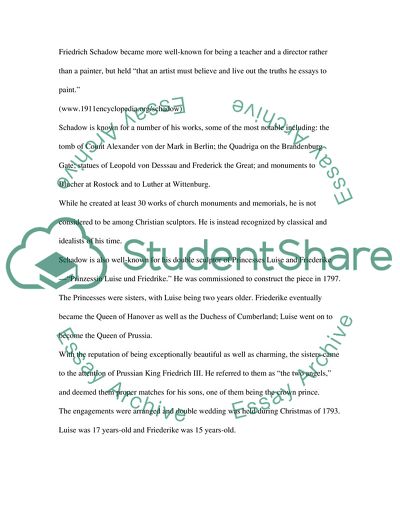Cite this document
(Johann Gottfried Schadow Essay Example | Topics and Well Written Essays - 1250 words, n.d.)
Johann Gottfried Schadow Essay Example | Topics and Well Written Essays - 1250 words. https://studentshare.org/biographies/1714191-johann-gottfried-schadow-statue-of-princess-luise-and-friederike
Johann Gottfried Schadow Essay Example | Topics and Well Written Essays - 1250 words. https://studentshare.org/biographies/1714191-johann-gottfried-schadow-statue-of-princess-luise-and-friederike
(Johann Gottfried Schadow Essay Example | Topics and Well Written Essays - 1250 Words)
Johann Gottfried Schadow Essay Example | Topics and Well Written Essays - 1250 Words. https://studentshare.org/biographies/1714191-johann-gottfried-schadow-statue-of-princess-luise-and-friederike.
Johann Gottfried Schadow Essay Example | Topics and Well Written Essays - 1250 Words. https://studentshare.org/biographies/1714191-johann-gottfried-schadow-statue-of-princess-luise-and-friederike.
“Johann Gottfried Schadow Essay Example | Topics and Well Written Essays - 1250 Words”. https://studentshare.org/biographies/1714191-johann-gottfried-schadow-statue-of-princess-luise-and-friederike.


